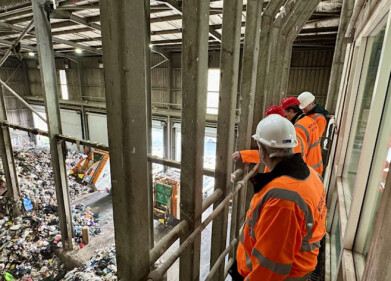Waste management
Where Do Plastics Go?
Dec 31 2021
It’s perhaps difficult to believe that the mass production of plastics only began in earnest a little over seven decades ago. However, the rapid uptake of plastic in manufacturers of everything from furniture to food packaging to electronic gadgetry to garments has meant that some 8.3 billion metric tonnes of the stuff have been produced since 1950.
A life without plastic is perhaps difficult (if not possible) to comprehend. At the same time, very few of us pause to consider where the plastic we consume goes once we have disposed of it. The sad truth of the matter is that a crushingly low percentage of plastic waste is recycled, with rest ending up in landfill dumps or, even more concerningly, our rivers, lakes and oceans. Here’s an examination of those destinations in closer detail.
Recycling
While we’d all love to believe that every piece of plastic produced ends up in a recycling facility where it is efficiently transformed into something new, the reality is far removed from that ideal. In fact, a paltry 9% of the plastics produced over the last 70 years have been recycled!
Even when the waste is disposed of appropriately and diverted to a recycling centre, that doesn’t always mean a positive outcome is achieved. Depressingly, the vast majority of waste generated in the developed world is not recycled within the country of origin’s borders. Instead, it is shipped to third world countries where cheap labour and lax environmental standards make it more attractive to the powers that be – but far less beneficial for the environment.
Landfill
Plastics which are deposited with general waste rather than via the appropriate recycling channels often ends up in landfills, where they can endure in our environment for 1,000 years or more. Over that monumental timespan, the plastic can leach toxic chemicals into the soil, air and water sources around it, negatively impacting their quality and endangering the lives of flora and fauna in the vicinity.
And that’s the best-case scenario. Again, developing nations do not have robust waste disposal protocols in place. Given that an estimated 40% of the world’s waste is dumped in unregulated landfills, it can quite easily overflow into lakes and rivers nearby, which invariably carry it out to its final destination: the ocean.
Oceans
Estimates show that by 2050, the weight of plastic pollution in our seas and oceans will be greater than that of the cumulative body mass of all fish! That staggering projection illustrates the scale of the problem and highlights the need for drastic action.
Once stranded in the ocean, plastic can accumulate in large-scale congregations (such as the Great Pacific Garbage Patch) or else break down into much smaller microplastics. Although the scientific community is still struggling to understand just how dangerous microplastics are, we know that they can be mistaken for food by marine-dwelling organisms and ingested. This fills their stomachs without providing nutrition, as well as potentially damaging their internal organs and jeopardising their survival.
Events
Apr 08 2025 Targi Kielce, Poland
Apr 08 2025 Bahrain
Apr 10 2025 Beijing, China
Apr 10 2025 Beijing, China
Apr 15 2025 Moscow, Russia














